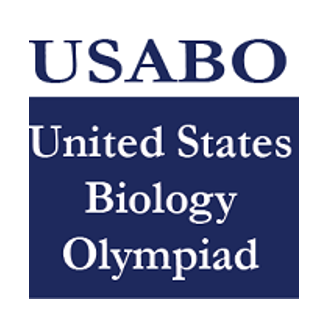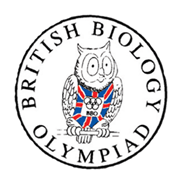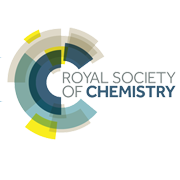- 翰林提供学术活动、国际课程、科研项目一站式留学背景提升服务!
- 400 888 0080
翰林国际教育IGCSE Biology生物辅导
IGCSE Biology生物真题
翰林国际教育IGCSE Biology生物辅导计划
| Topic | Subtopics | Hours* | Homework |
| 1. Characteristics and classification of living organisms | 1.1 Characteristics of living organisms | ||
| 1.2 Concept and use of a classification system | |||
| 1.3 Features of organisms | |||
| 1.4 Dichotomous keys | |||
| 2. Organisation of the organism | 2.1 Cell structure and organisation | ||
| 2.2 Levels of organisation | |||
| 2.3 Size of specimens | |||
| 3. Movement in and out of cells | 3.1 Diffusion | ||
| 3.2 Osmosis | |||
| 3.3 Active transport | |||
| 4. Biological molecules | 4.1 Carbohydrates 4.2 Lipids 4.3 Proteins 4.4 Nucleic acid |
||
| 5. Enzymes | |||
| 6. Plant nutrition | 6.1 Photosynthesis | ||
| 6.2 Leaf structure | |||
| 6.3 Mineral requirements | |||
| 7. Human nutrition | 7.1 Diet | ||
| 7.2 Alimentary canal | |||
| 7.3 Mechanical digestion | |||
| 7.4 Chemical digestion | |||
| 7.5 Absorption | |||
| 8. Transport in plants | 8.1 Transport in plants | ||
| 8.2 Water uptake | |||
| 8.3 Transpiration | |||
| 8.4 Translocation (Extended candidates only) | |||
| 9. Transport in animals | 9.1 Transport in animals | ||
| 9.2 Heart | |||
| 9.3 Blood and lymphatic vessels | |||
| 9.4 Blood | |||
| 10. Diseases and immunity | |||
| 11. Gas exchange in humans | |||
| 12. Respiration | 12.1 Respiration | ||
| 12.2 Aerobic respiration | |||
| 12.3 Anaerobic respiration | |||
| 13. Excretion in humans | |||
| 14. Coordination and response | 14.1 Nervous control in humans | ||
| 14.2 Sense organs | |||
| 14.3 Hormones in humans | |||
| 14.4 Homeostasis | |||
| 14.5 Tropic responses | |||
| 15. Drugs | 15.1 Drugs | ||
| 15.2 Medicinal drugs | |||
| 15.3 Misused drugs | |||
| 16. Reproduction | 16.1 Asexual reproduction | ||
| 16.2 Sexual reproduction | |||
| 16.3 Sexual reproduction in plants | |||
| 16.4 Sexual reproduction in humans | |||
| 16.5 Sex hormones in humans | |||
| 16.6 Methods of birth control in humans | |||
| 16.7 Sexually transmitted infections (STIs) | |||
| 17. Inheritance | 17.1 Inheritance | ||
| 17.2 Chromosomes, genes and proteins | |||
| 17.3 Mitosis | |||
| 17.4 Meiosis | |||
| 17.5 Monohybrid inheritance | |||
| 18. Variation and selection | 18.1 Variation | ||
| 18.2 Adaptive features | |||
| 18.3 Selection | |||
| 19. Organisms and their environment | 19.1 Energy flow | ||
| 19.2 Food chains and food webs | |||
| 19.3 Nutrient cycles | |||
| 19.4 Population size | |||
| 20. Biotechnology and genetic engineering | 20.1 Biotechnology and genetic engineering | ||
| 20.2 Biotechnology | |||
| 20.3 Genetic engineering | |||
| 21. Human influences on ecosystems | 21.1 Food supply | ||
| 21.2 Habitat destruction | |||
| 21.3 Pollution | |||
| 21.4 Conservation | |||
| Total |
*计划课时仅供学霸级学员参考,实际用时依学员具体情况会有调整。
*翰林国际教育原创内容,谢绝转载。商务合作请联系小助手linstitute2。
IGCSE Biology生物国际学术活动
国际课程+国际学术活动更具竞争力
USABO/BIO USACN 每年4月
难 度: 含金量: USA Biology Olympiad,美国生物奥林匹克,Center for Excellence in Education举办,2017年进入中国,已经吸引每年上千名中国学生参赛
USNCO 每年3月预赛
难 度: 含金量: US National Chemistry Olympiad,美国化学奥林匹克,由美国化学会举办,美籍或绿卡学生参加,每年3月各地选拔赛,6月夏令营集训,为七月的IchO做准备
BBO 每年4月
难 度: 含金量: 英国皇家生物学会举办的全英生物奥赛,已经登录中国八十多所学校。2017年参赛人数近8000人,比赛形式为笔试。
UKChO 每年1月
难 度: 含金量: 皇家化学学会举办的英国顶级水平的高中化学学术活动,纯笔试形式,个人赛。
Toronto Bio 每年4月
难 度: 含金量: University of Toronto National Biology Competition多伦多大学举办的生物学术活动,是CBO选举加拿大生物奥赛除实验技能外理论知识的唯一选拔标准,专为加拿大推举可以参与IBO国际生物奥赛的优秀学生,优异者有机会获得多大奖学金。
丘成桐化学奖 每年9月-12月
难 度: 含金量: Yau Science Awards (Chemistry),每年一届,研究报告的形式参赛。旨在发现有前途的全球华人年轻科学天才。

早鸟钜惠!翰林2025暑期班课上线

最新发布
© 2025. All Rights Reserved. 沪ICP备2023009024号-1














